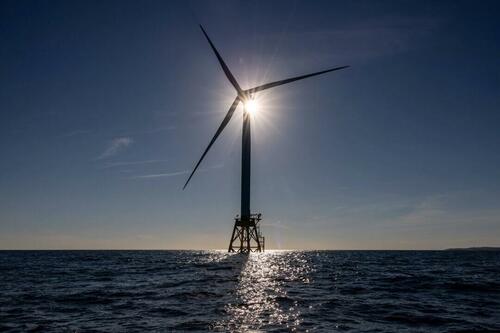ECB Cuts Rates: A Strategic Move for Eurozone Growth Amid Trade Tensions
Tháng 4 17, 2025USDJPY Sideways Trend Analysis: Greed Dominates Market Sentiment
Tháng 4 17, 2025Trump Administration Halts Empire Wind 1 Offshore Project: A Major Shift in Renewable Energy Policy
The Trump administration has taken a formidable step against offshore renewable energy development by issuing a directive to halt the Empire Wind 1 offshore wind project located near New York. Currently under construction and representing an investment of $5 billion, this decision marks the administration’s most aggressive stance to date against offshore wind initiatives in the United States. The Bureau of Ocean Energy Management (BOEM) has ordered the Norwegian developer Equinor to cease all work on the outer continental shelf while the project is reviewed for its initial approval, which was granted under the Biden administration in November 2023.
Details of the Empire Wind 1 Project
The Empire Wind 1 project is a pivotal offshore energy initiative that aims to generate a substantial 810 megawatts of power, sufficient to provide electricity for approximately 500,000 homes by the time it becomes operational in 2027. Originally conceived with its lease signed in March 2017, during the first term of the Trump administration, the project gained the green light for construction in early 2024 under President Biden’s climate agenda. However, the current administration has called into question the permit process, suggesting it was hastily approved without thorough examination—though specific deficiencies have not been publicly articulated.
Interior Secretary Doug Burgum emphasized the necessity for a meticulous review of what he termed “serious deficiencies” in the approval process while alluding to a broader executive order that not only places a moratorium on new offshore wind initiatives but also targets state and local climate regulations perceived as impediments to energy production.
Political and Economic Reactions
This sudden halt has drawn sharp criticism from various stakeholders. New York Governor Kathy Hochul fiercely opposed the federal suspension, characterizing it as an overreach and pledging to defend the project and the 1,000 union jobs tied to it. Governor Hochul’s commitment underscores New York’s ambitions toward cleaner energy solutions that align with its local climate goals.
Industry representatives, such as the American Clean Power Association, have echoed similar sentiments, condemning the halt as contradictory to the nation’s pursuit of energy abundance. They cautioned that this federal action could deter future investments in renewable energy sectors, which are pivotal to transitioning away from fossil fuels.
Environmental organizations, too, expressed alarm over the administration’s move, emphasizing the urgent need for clean energy solutions to combat climate change. This perspective resonates strongly, especially as the world grapples with the increasingly volatile impacts of climate disruption.
Equinor is currently deliberating an appeal against the BOEM’s cease work order, as the halt not only affects offshore construction but disrupts vital infrastructure operations, such as those at the South Brooklyn Marine Terminal that support the project’s logistical needs.
Wider Implications on Offshore Wind Development
The stoppage of the Empire Wind 1 project is part of an expansive regulatory effort by the Trump administration aimed at restricting offshore wind initiatives along the Atlantic Coast. This reversal stands in stark contrast to the Biden administration’s ambitious target of achieving 30 gigawatts of offshore wind energy by 2030. The previous measures implemented under the Trump administration included restrictions on new lease sales, permit approvals for offshore wind projects, and the revocation of air permits, all indicative of a broader agenda prioritizing fossil fuel energy over renewable resources.
In conclusion, the Trump administration’s recent action to halt the Empire Wind 1 offshore wind project signifies a significant political and regulatory turbulence within the renewable energy landscape. With the project already underway and fully permitted, this intervention could potentially affect investor confidence and cast uncertainty over the future of offshore wind projects in the region. As the nation embraces an era of climate urgency, developments like these will be closely watched by both proponents of clean energy and those invested in preserving traditional energy sectors.

